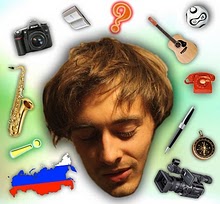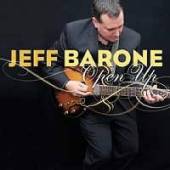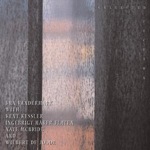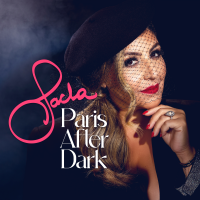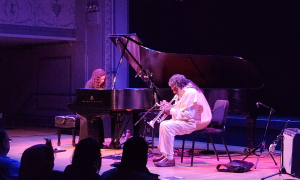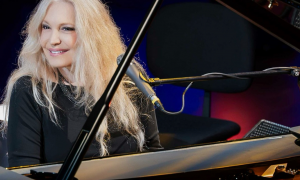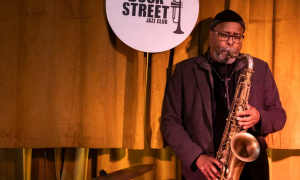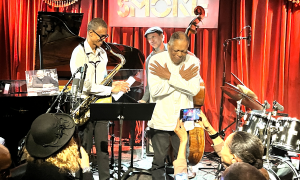Home » Jazz Articles » Live Review » London Jazz Festival 2008
London Jazz Festival 2008
London, England
Nov. 14-23, 2008
Ken Vandermark, Barry Guy, Mark Sanders
The Vortex
November 14
In a meticulously unplanned concert, the music often seemed like a sonic battle between these three renowned improvisers. Sporting a black fitted tee and a hairstyle that could be straight from the Police Academy films, Vandermark was the dominant voice. On tenor saxophone and occasionally clarinet, his signature wailing, guttural, distorted screams interchanged with lithely melodic phrases and deft percussive passages. Sanders and Guy were largely in the background, providing a constant stream of ideas and demonstrating why they are so highly regarded amongst the European avant-garde. Guy in particular employed a number of extended techniques, utilizing all parts of his five-string double bass and performing on-the-job customizations such as jamming a drumstick under the strings, or using a soft-headed beater to produce gentle ripples of sound during quieter movements. Certainly a spectacular opening for the promising festival program, it would be hard for any subsequent performance to surpass the sheer creative intensity on display this Friday night.
Bill Frisell
Barbican Centre
November 15
The idea of a band playing live to accompany films is becoming very fashionable: Courtney Pine and Steven Bernstein are, along with Frisell, artists who have experimented with the concept. Frisell's trio tonight provided the soundtrack for a series of short pieces, from abstract insectile cartoons to a couple of delightful Buster Keaton slapsticks. With such a volume of audio and visual stimuli assaulting the senses, it was difficult to simultaneously focus attention on both music and moving images. However, the band, comprising Kenny Wollesen on drums and Tony Scherr on bass, always produced something to fit the occasion—whether stretching out in illustrative soundscapes or employing highly synchronized compositions with clever and perfectly-timed sound effects from the drummer. Always the individual stylist, Frisell stamped his mark on everything they played, his instantly recognizable tone ringing out with influences heavy in rock and country as much as jazz. The only drawback was that, occasionally, there was not a lot of variation in the overall sound produced for different films.
Richard Galliano and Gonzalo Rubalcaba
Queen Elizabeth Hall
November 16
A truly dreadful opening act featuring Romanian violinist Alexander Balanescu and Russian accordionist/singer Evelina Petrova went on for much too long without going anywhere musically; it wasn't even jazz. Galliano and Rubalcaba did not appear as a duo until after 10 p.m., following brief solo recitals from both. The fleet-fingered French accordion player ran through a series of short tunes, including Astor Piazzolla's classic "Libertango," with typically passionate Gallic flair. Rubalcaba's formidable touch was not employed to its fullest extent at any stage. His hands danced around the keys, but he seems to have developed a calmer, more restrained and exploratory attitude—there were no blistering runs, but his harmonic and rhythmic inventiveness was equally spectacular for those listening carefully. As a duo, they were engaging and communicative, giving each other space to play and not going over the top. A few more tempo changes would have been pleasing, but on the whole an impressive and vibrant performance.
Chris Potter
Ronnie Scott's
November 17
What hasn't been said about Chris Potter? Deserved critical praise has been sent his way from all angles, including for the current 'Underground' project featuring Craig Taborn (Fender Rhodes), Adam Rogers (guitar) and Nate Smith (drums). All were in fine form at Ronnie's, with the band's groove-oriented aesthetic laid bare for a packed house to enjoy. Potter's tenor sax (and occasional bass clarinet) cut through an intriguing web of guitar and Rhodes as they melted together lavishly, with either Rogers or Taborn keeping an eye on the low frequencies to compensate for the lack of bassist. The saxophonist's brutally rhythmic improvisational attack is perfectly suited to this kind of upbeat setting—the band has mastered the art of carefully growing each tune, gently rising in volume and intensity to push any soloist to his limits. And the repertoire wasn't restricted to fast-paced blitzing assaults, with Bob Dylan and Joni Mitchell covers thrown in for a bit of mellow variety.
Robert Glasper
Cargo
November 18
The lines between jazz and hip-hop have been frequently blurred in recent years, by all manner of artists from saxophonist Greg Osby to the incendiary Youngblood Brass Band. No one, however, has been more effective than Glasper in exploring the crossover through a piano trio format. A relative newcomer on the international circuit, the Texan differs from many musicians who have dabbled with this potent fusion in that his music is genuinely rooted in jazz and hip-hop as equal partners—rather than simply jazz from a hip-hop angle, or vice versa. For this outing Glasper was joined by Alan Hampton on bass and phenomenal drummer Chris Dave, the band's indisputable engine. Beat-heads were out in force, uttering whoops of joy at Dave's peppery rhythms, lightning fills and fearsomely fiery breaks. His sense of timing is wickedly skewed in the best possible way, the perfect complement to Glasper's rippling, undulating chordal style. The pianist is a player of unrivalled fluidity and superior harmonic nous, but his vamps sometimes became overly cyclical and the music a touch directionless. Yet Dave and Hampton always managed to keep things moving—the essence of the trio is perhaps more about soaking up the grooves than any individual leading the way.
Herbie Hancock
Barbican Centre
November 19
To this writer's delight, it seems Mr. Hancock may have read the review posted on AAJ of his performance at the 2008 North Sea Jazz Festival. In short, it was a less-than-innovative stroll through a funk songbook largely of the Headhunters idiom, which, despite the classic nature of the tunes and excellent delivery, was disappointing in its familiarity. This show, on the other hand, was much more exciting—Hancock explored some different material at greater length, aided by a stellar band featuring Terence Blanchard (trumpet), Gregoire Maret (harmonica), Lionel Loueke (guitar), Kendrick Scott (drums) and James Genus (bass). The musicians seemed to gel more meaningfully than an almost completely different group in Rotterdam, with Genus and Scott locked together solidly and Loueke in inspired form. They played for nearly three hours. Blanchard was an imperious presence on every solo, strutting the stage and employing delay and chorus effects for added wow. It's an increasingly rare delight to find him on the road with other leaders, as he is often occupied with teaching and film score gigs. The Swiss Maret had his moments, but looked a little out of depth next to the plethora of highly experienced players. Of course Hancock had to throw in a couple of old standards— "Cantaloupe Island," "Actual Proof" and "Chameleon" as an encore (with obligatory keytar jamboree)—but long, twisted, epic adventures through "Speak Like a Child" and Wayne Shorter's "Visitor" ceded together, and a stirring rendition of Loueke's convoluted "17s," more than compensated.
N.B. Highlights from this concert are being broadcast by BBC Radio Monday 3, December 8, 2008 and will be available for seven days online at www.bbc.co.uk/radio3.
Matthew Herbert Big Band
Royal Festival Hall
November 21
Matthew Herbert has created a musical monster. With five saxophones, four trumpets, four trombones, piano, bass, drums, lead vocalist, more than 60 backing singers (exclusively for this gig), a musical director and the man himself on electronic wizardry, this a summative depiction of contemporary jazz on a grand scale. It is also a beast which obeys its every command, capable of filling any setting with euphoric uproar. Sadly the Festival Hall engineering crew did not match the band's standard—it came through the system flat, cramped and unbalanced in a venue that should do better. After a slow start, featuring a couple of forgettable pop-ish meanderings, things really took off with powerful vocalist Eska leading the effort; although often burdened with slightly mundane and repetitive lyrics, she was never lacking style in delivery, admirably making the most of what she was given. One of the most enjoyable moments was a delightedly choreographed tune that featured almost all performers on stage tearing up copies of a low-reputation national newspaper in tandem. Here and in other instances, Herbert's crafty live sampling skills were a lesson in ruthless accuracy. The audience went home very happy, but, in purely technical terms, this ferocious band could have sounded a lot happier.
Chucho Valdes
Barbican Center
November 22
With Chucho Valdes, one always knows what to expect: a flourishingly buoyant display of Latin jazz led from the piano stool of this old master. Tonight, a rare visit to London, was no exception. Opening with a scorching medley including Duke's "Satin Doll" and the effervescent "Caravan," he went on to quote Joe Zawinul's "Birdland" in mambo form and spotlight the talents of his two percussionists—Juan Carlos Castro Rojas (drum kit) and Yaroldi Abreu (congas)—by allowing them to let loose in a long, spicy rhythmic feast with no real piano melody. That was just the first half. After the interval, Valdes brought out a four-piece horn section as well as his sister, the eccentric singer Mayra Caridad, for a couple of party numbers. The music took on a slightly rougher, more instinctive vibe, with all players given ample solo freedom. A brilliantly tight arrangement of Victor Young's "Stella by Starlight," with the head blasted out at breakneck speed, was typical of the sweltering big-band writing Valdes has developed through his noted group Irakere. The pianist clearly prides himself on well-drilled ensemble work and, although this set of compatriots may not have reached the dizzy heights (forgive the pun) of Paquito D'Rivera or Arturo Sandoval, they all had rich improvisational contributions to make—particularly Alexander Abreu's blaring trumpet and the cameo appearance of German Velazco's sweet soprano sax. And if that wasn't enough, a solitary woman even began to dance in the aisles of the cavernous Barbican hall: a typically British scenario, surely a far cry from the rapturous reception this superb band would receive back in Cuba.
Bireli Lagrene and Martin Taylor
Queen Elizabeth Hall
November 23
This was a fitting end to the festival, as two of the world's principal guitarists came together for an intrepid race to the pinnacle of distinction. Messrs. Lagrene and Taylor both worked with the great Stephane Grappelli, and, while continuing to honour the gypsy swing roots of Grappelli and Django Reinhardt, they have carved their own niches in the minds of music lovers. Taylor is par excellence in his incredible solo work, hypnotically fingerpicking his way through standards and originals alike; imagine Tommy Emmanuel high on jazz with a smooth electric tone and endless silky licks. Lagrene, although he has dabbled in fusion and post-bop, often favours the Manouche style of his Gypsy forefathers. His compact trio, featuring gentle bassist Diego Imbert and Hono Winterstein on rhythm guitar, offered the perfect opportunity for the Frenchman's dazzling chops to run free. When joined by Taylor for the last few songs of the night, the spectacle became any guitarist's dream ticket: the two had traded ideas in earlier duets, but went on to push each other further upwards with breathtaking interplay, supercharged by the immaculate backing of Winterstein and Imbert. A couple of swinging encores later, it was the end of everything—another spectacular success for the London Jazz Festival.
Tags
PREVIOUS / NEXT
Support All About Jazz
 All About Jazz has been a pillar of jazz since 1995, championing it as an art form and, more importantly, supporting the musicians who make it. Our enduring commitment has made "AAJ" one of the most culturally important websites of its kind, read by hundreds of thousands of fans, musicians and industry figures every month.
All About Jazz has been a pillar of jazz since 1995, championing it as an art form and, more importantly, supporting the musicians who make it. Our enduring commitment has made "AAJ" one of the most culturally important websites of its kind, read by hundreds of thousands of fans, musicians and industry figures every month.

